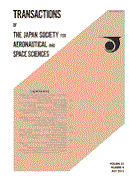Volume 45, Issue 150
Displaying 1-10 of 10 articles from this issue
- |<
- <
- 1
- >
- >|
-
2003Volume 45Issue 150 Pages 211-216
Published: 2003
Released on J-STAGE: July 09, 2005
Download PDF (940K) -
2003Volume 45Issue 150 Pages 217-223
Published: 2003
Released on J-STAGE: July 09, 2005
Download PDF (351K) -
2003Volume 45Issue 150 Pages 224-228
Published: 2003
Released on J-STAGE: July 09, 2005
Download PDF (906K) -
2003Volume 45Issue 150 Pages 229-235
Published: 2003
Released on J-STAGE: July 09, 2005
Download PDF (155K) -
2003Volume 45Issue 150 Pages 236-242
Published: 2003
Released on J-STAGE: July 09, 2005
Download PDF (598K) -
2003Volume 45Issue 150 Pages 243-248
Published: 2003
Released on J-STAGE: July 09, 2005
Download PDF (808K) -
2003Volume 45Issue 150 Pages 249-254
Published: 2003
Released on J-STAGE: July 09, 2005
Download PDF (155K) -
2003Volume 45Issue 150 Pages 255-260
Published: 2003
Released on J-STAGE: July 09, 2005
Download PDF (705K) -
2003Volume 45Issue 150 Pages 261-266
Published: 2003
Released on J-STAGE: July 09, 2005
Download PDF (211K)
TECHNICAL NOTE
-
2003Volume 45Issue 150 Pages 267-268
Published: 2003
Released on J-STAGE: July 09, 2005
Download PDF (41K)
- |<
- <
- 1
- >
- >|
